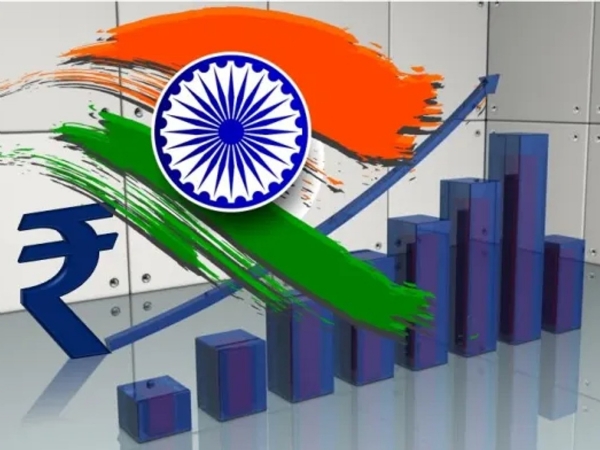Lessons from the East XIX: Decoding the Decade of India
As India advanced, many positive swings emerged, but there are three mega undercurrents, that have altered and continue to alter the trajectory of trends to make India the third-largest economy in GDP terms by the end of the decade or the largest economy
Total Views |
Subhashit:
योजनानां सहस्त्रं तु शनैर्गच्छेत् पिपीलिका |आगच्छन् वैनतेयोपि पदमेकं न गच्छति ||
Meaning: One should consistently move ahead even with small steps to make progress, else, it leads to stagnation and the result of stagnation is never good. Even a tiny creature such as an ant can move thousands of kilometers forward, if it keeps on walking consistently. But if an Eagle doesn’t move from its place, it can’t move even a foot ahead!
The Buzz, the debate, the viewpoints
A couple of months back, headlines flashed on Social media and televised channels when Mckinsey, one of the leading global consulting companies spoke about the twenty-first century belonging to India, rather than just the forthcoming decade.
Televised debates, print media articles, and editorials started trending with the viewpoints of why and why not!
Where there are worthy & credible, there exist, dastards, when believers emerge, naysayers crop up too.
This debate about Bharat’s growth has been in existence for millennia sometimes talking about her capability to show the path to the world about economic prosperity, sometimes spiritual, and sometimes planetary. These dialectics existed and will continue to exist even if Bharat emerges as the largest economy in the world in real GDP terms. This milestone now seems achievable in a quarter or so of a century.

But as mentioned above, where there are protagonists, there has to be an antagonist. If there are Dreams, there are devils to destroy the dreams as well.
Irrespective of how fast India's collective growth model will thrive, one thing is certain: The elephant is moving, the world is witnessing & ignoring the elephant, is no more an option.
What is visible to the world today, is not an event, not an accident, not sheer luck, it’s a step-by-step strategy driven by every single individual who loves Bharat and who pursued the path to bring her to the pole position where some are appreciative and some are envious.
Emerging Bharat
Bharat had golden millenniums, however, Bharat’s patience, compassion, and Dharma-centric approach were sometimes crushed, sometimes stabbed, and sometimes stomped especially in the last six hundred years.
Finally, after centuries of suppression and oppression, Seventy-five years back, when Bharat got on the path of Self-determination, it started to realize its strengths and commenced the journey of not only self-good but collective well-being. Three decades back, the pace of Self-determination expedited and it turned on the Self-control (Dignity & Discretion) mode by liberalizing its economy. Furthermore, eight years ago, the momentum gained and Self-reliance became the underlying principle in India’s growth trajectory.
As India advanced, many positive swings emerged, but there are three mega undercurrents, that have altered and continue to alter the trajectory of trends to make India the third-largest economy in GDP terms by the end of the decade or the largest economy as India completes a century of Independence.
These are summarized as 3Ds:
1. Democratizing the access to Capital
Bharat for millennia has been a believer in entrepreneurship. It’s well documented in India’s ancient history, that even the remotest villages of India were self-reliant producing nearly 2000 products in every village and the only product they called from outside was salt.
With the advent of Britishers & foreign forces, access to capital, money, or finance got restrained and restricted in a few hands. Furthermore, the rapid mindless industrial revolution of the west led to the death of entrepreneurial instincts at the elementary grassroots level in India under Western subjugation.
With plundering and dacoity by Britishers for over 200 years, post-independence Indians were impoverished and thus the complete focus of a common Indian was on mere survival. As India and Indians progressed through the years, most savings was channelized into Real estate and Gold as rainy day instrument.
With the advent of the internet in the 21st century, things transformed for India and it brought hope. Along with hope, came the slow & steady alteration in the attitude. Thus in the last half a decade, ground-level change was witnessed in the savings structure of India and all of it was driven by digital information, and easy access to knowledge, with money finding its way into capital markets.
In FY 12, the total number of Demat accounts in India stood at 19.9 million, the same crossed the 100 million mark in Aug 2022, nearly a five-fold jump in a decade showing that participation in capital markets has not increased but multiplied and galvanized by retail.
In other words, not only are investors' savings channelized into the capital markets benefitted from the growth of the companies, but companies both small and big both found easy access to capital for their growth.
This is on the liabilities side. On the asset side too, technology-facilitated.
Fintech enabled lending in a big way again giving access to capital to the remotest, weakest, and most vulnerable. India over the years has emerged as the 3rd largest Fintech destination just behind the US and the UK with an aggregate funding of USD 30.2 billion empowering over 7300 startups in this space.
In the present day, if one has a dream, one has an idea, one gets access to capital easily. NBFCs, Banks, and Small & micro-lending institutions are competing with each other by using tech to lend within minutes.
Additionally, the inherent nature of Indians has always been to adapt and that’s what is been built in our roots. India’s adoption rate of fintech is 87% despite such a large, diverse and geographically spread out population whilst the world average stands at 64%.
The results of this technology facilitation on both sides of the balance sheet are clearly visible now.
As access to capital has been democratized, so has the jump in entrepreneurial activity. The number of startups in India has grown to 72,993 in 2022 from 471, again the third largest in the world.
2. Digitization enabling Demographic
It's common knowledge that India is the house of 1.41 billion people and 65% of them are between the working ages of 15 years to 59 years. The robust fertility rate is ensuring that demographics remain favorable for India not for a decade for decades to come. It’s forecasted by the World Bank that India should continue to reap the benefit of Demographic dividends till 2057.
But this demographic dividend could have turned into a disadvantage if the people of the country are not healthy, educated, or skilled. Thanks again to the tech of the twenty-first century including 4G + forthcoming 5G connectivity, the people, the population, and the community is getting education, skills, and health + wellbeing advice at the click of a button.
Besides education, digitization has enabled a direct connection between the government and the masses of India ensuring that all socially driven scheme benefits now percolate directly in the bank account of the beneficiary not routed through middlemen.
The most phenomenal thing about this entire digitization episode is that most of the tech companies and most advanced technology-driven platforms are owned by corporate czars in the west, however, the most advanced tech in India from Cowin in healthcare to UPI in the payments system is owned by Government ensuring its benefit percolate down to the last man standing.
3. Decoupling Effect
In Sept 2019 pre covid, the inflation in the US stood at ~ 1.81% with standard mortgage rates hovering around 3.49%. In India, during the pre-covid era of Sept 2019, the inflation was 4% whilst the mortgage rate was at ~ 8.40%.
Post covid, two years hence in Sept 2022, the inflation in the US stood at ~ 8% with the mortgage rate at 7.25%. India on the other hand, saw inflation of 7.41% and a mortgage rate of 8.50%.
In other words, when the US inflation moved up by ~ four times and mortgage rates doubled, the Indian financial markets witnessed stability and resilience.
Why did this decoupling happen?
When the west was focused on doling out cash to boost demand, so that people can spend money on goods (as services were shut) and ease up the burden of payment of Housing Loan and Education Loan EMIs, ignoring and not solving the supply side challenges. This misjudgment by the West pushed inflation four times and the west continues to face the heat of it, even in winter (Pun intended).
India on the other hand, took initiatives during covid like Atma Nirbhar Bharat, PLI (Performance Linked Incentive) Schemes, the National Master Plan for Multi-modal Connectivity, and many more similar initiatives that aided in fixing up the challenges on the manufacturing side, nudging India to get on the fast track of Make in India, Make for India and Make for World.
One has already seen that some of these initiatives have fructified into unrivaled success. For example, India has moved up the ladder to emerge as the second-largest mobile phone manufacturer, as well as the largest two-wheeler manufacturer in the world.
Post covid, the Pent up demand got converted into real demand, and support in terms of free food grains and vaccines ensured the health of the country remained intact.
Thus Siddhartha Rastogi postulates, Inventiveness has built the foundation of the changed trajectory of India’s Growth and this will propel the economy to grow 3 X in the forthcoming ten years.
Connect with Siddhartha Rastogi-
Twitter: @beingsworld
Instagram: @beingsworld
Facebook: https://www.facebook.com/siddhartha.rastogi
Linkedin: https://www.linkedin.com/in/siddhartharastogi
Medium.com: https://siddhartharastogi.medium.com
Blog: https://beingsworld.blogspot.com/



